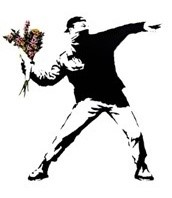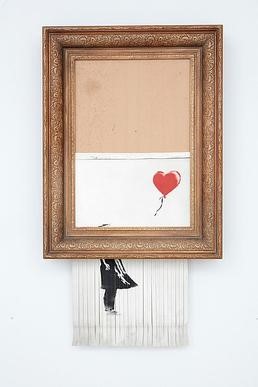We all know that Banksy – the world-renowned British street artist – presents an interesting juxtaposition. A street artist who rose to fame partly due to his anonymity. His works appear on walls or the sides of buildings and have also sold in high-end galleries for millions of dollars/pounds.
Banksy’s disdain for intellectual property (IP) rights is also well publicised. Perhaps that is due in part to the fact that graffiti artists work on the fringes, where their creative artistic works are generally posted onto other people’s property and can amount to criminal conduct.
In one of his books, Banksy infamously said that ‘copyright is for losers’, despite the fact that he has copyright in his artistic works. That is because copyright exists (both in Australia and in the UK) when an original artistic work is created and protection extends, even to the works of graffiti artists.
As a further contrast, while shunning copyright, Banksy’s company (Pest Control Office Limited) has applied for 36 trade marks in Europe, the US and in Australia. The majority of those marks are images of Banksy’s artworks.
It appears as though Banksy may have sought to protect his creative rights through registering trade marks via his company, in order to maintain his anonymity, rather than relying on his copyright claims. Because to bring a claim for copyright infringement, the author would need to confirm that they created the original work and thereby reveal their identity. If the rights had been assigned, such as to Banksy’s company, then the company could bring a claim, but would need to prove that the author had transferred those rights to it before it could succeed.
The strategy appears to have become unstuck as a UK greeting card company, Full Colour Black, has successfully appealed against registration of a European Union trade mark for the well-known ‘flower thrower’ protest artwork which was painted (sprayed) on a wall in Jerusalem in 2005. The trade mark application was filed in 2014 and in 2019 Banksy set up pop-up and online stores which he stated were created for “making stuff for the sole purpose of fulfilling trade mark categories under EU law”.

As trade marks work on the basis of ‘use it or lose it’, Banksy may have thought that selling some goods which had the trade mark applied to them (online and in the pop-up store) would save the registration. Often that can be the case where marks are registered but not put into commercial use and is the reason why food chains such as In-N-Out burger have become well known for their intermittent pop-up sites/sales.
However, trademarks must also be registered in good faith, on the basis that the owner intends to use them as a trade mark – being an identifier of the business or product with which they are associated. The reason is to prevent entities from blocking trade marks from being registered when they are not intended to be used.
As Banksy had not shown an intention to use his trade mark as an identifier (i.e. there was no use ‘as a trade mark’), the challenge has thus far been successful.
The distinction as to whether Banksy had used his artwork as a trade mark can be determined by considering whether the products were sold with Banksy’s artwork simply appearing on them, or whether the image/mark was used as an identifier or “badge of origin” to signify that the products were Banksy made or authorised products.
The decision of the EU trademarks office was handed down in September 2020 and Banksy’s company now has two months to oppose that action. If the mark is finally removed, it may open claims for the removal of other of Banksy’s trade marks and could encourage some to use or commercialise his artwork on their products.
That could be a risky strategy as Banksy would still be entitled to enforce his copyright in the works. However, the enforcement of those rights would require Banksy to disclose his identity which is understandably an unenviable positon given how closely his anonymity is maintained.
Whilst IP rights can be complex that doesn’t have to be the case, but Banksy’s example highlights the need to choose an appropriate strategy and to select and maintain the IP rights which are relevant to your circumstances. If not, your rights may be shredded (like another of Banksy’s works after being sold at auction for $1.4 Million) and leave you unprotected.

